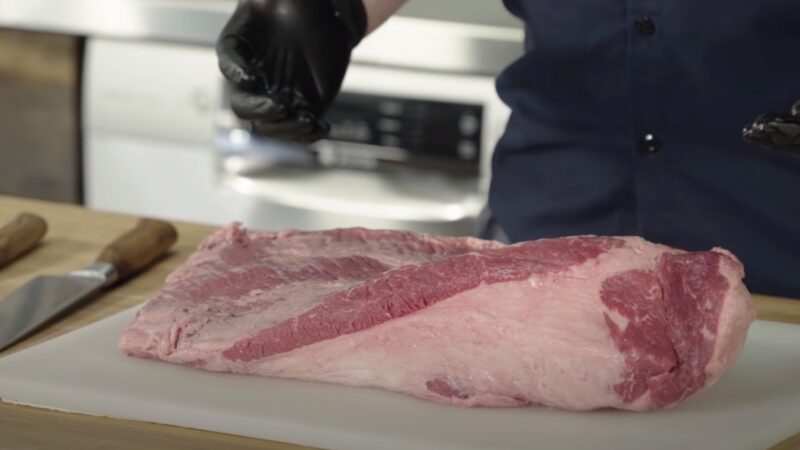When it comes to smoking a brisket, patience is not just a virtue – it’s a necessity. Like a painter who meticulously prepares their canvas, a pitmaster must handle the brisket with care and precision.
Thawing is the first brushstroke in the art of brisket smoking. In this article, I’ll walk you through the best methods to thaw your brisket, ensuring it’s perfectly prepped for the smoker.
Key Takeaways
- Refrigerator Thawing is Preferred: Thawing brisket in the fridge is slow but ensures even and safe thawing, taking about 5 hours per pound.
- Avoid Microwaving for Thawing: Microwaving can lead to uneven thawing and partial cooking, affecting the brisket’s quality.
- Cold Water Method for Faster Thawing: If short on time, use the cold water method, which takes about 30 minutes per pound, changing water regularly.
- Never Thaw at Room Temperature: Thawing brisket on the countertop increases the risk of bacterial growth and foodborne illnesses.
- Post-Thaw Handling Matters: Once thawed, brisket should be cooked properly. Avoid cooking from frozen to ensure even cooking and optimal flavor.
The Importance of Proper Thawing
Thawing a brisket correctly is akin to tuning a guitar before a concert. Just as an untuned guitar can spoil a performance, improper thawing can ruin a brisket.
The goal is to thaw the brisket evenly, maintaining its quality while ensuring food safety.
Why Not Microwave?
Microwaving is a no-go for brisket thawing. It’s like trying to speed-read a classic novel – you might get through it, but you’ll miss the essence.
Microwaving leads to uneven thawing and can partially cook some brisket areas, compromising texture and flavor.
Room Temperature: A Risky Affair
Defrosting on the countertop is not the best solution. It seems convenient, but it’s risky.
Room temperature thawing increases the risk of bacterial growth and foodborne illness.
Method 1: Refrigerator Thawing
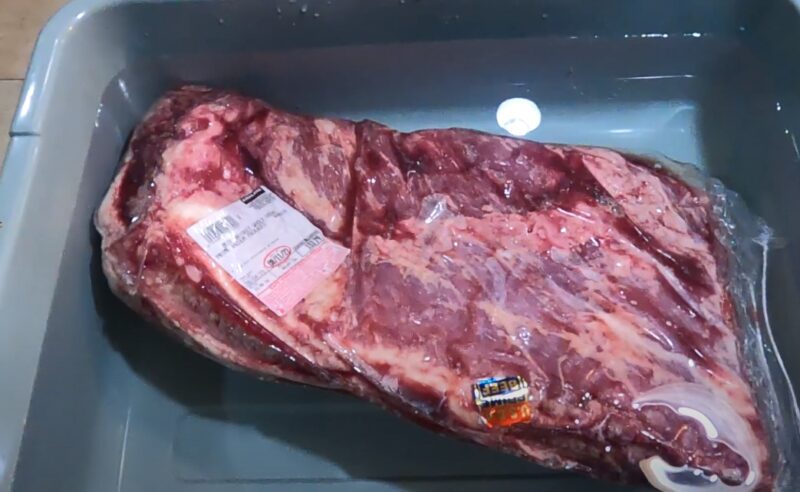
How Long Will It Take?
Thawing brisket in the refrigerator is a slow and steady race. It’s like marinating – it takes time but yields the best results.
Generally, it takes about 5 hours per pound. So, for a full-pack brisket of 15 pounds, you’re looking at around 75 hours, or just over three days.
Refrigerator Thawing Time
| Brisket Weight (lbs) | Thawing Time (hours) |
| 5 | 25 |
| 10 | 50 |
| 15 | 75 |
| 20 | 100 |
Best Practices
- Bottom Shelf: Place the brisket on the bottom shelf to prevent cross-contamination.
- Consistent Temperature: Keep your fridge at a consistent temperature.
- Patience is Key: Remember, good things come to those who wait.
Method 2: Cold Water Thawing
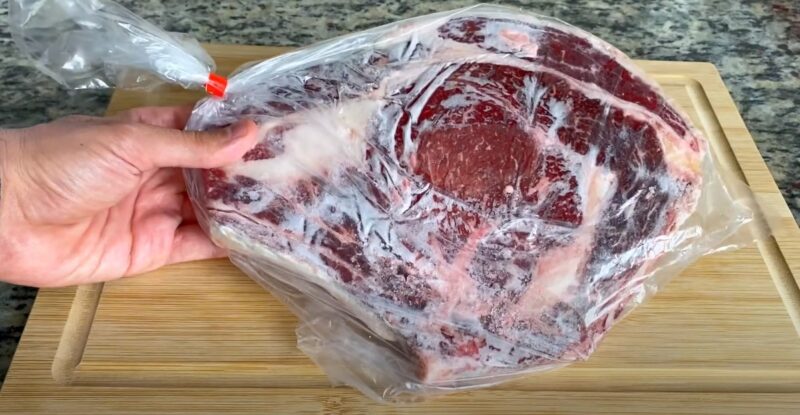
The Quick Alternative
If you’re pressed for time, the cold water method is like taking a shortcut through a scenic route. It’s faster but still enjoyable.
This method thaws brisket at a rate of 30 minutes per pound.
How to Do It
- Seal the Brisket: Ensure the brisket is in a leak-proof bag.
- Submerge in Cold Water: Change the water every 30 minutes to maintain the cold temperature.
Cold Water Thawing Time
| Brisket Weight (lbs) | Thawing Time (hours) |
| 5 | 2.5 |
| 10 | 5 |
| 15 | 7.5 |
| 20 | 10 |
Best Practices
- Regularly Change Water: Keep the water cold to ensure even thawing.
- Never Use Hot Water: Hot water can start cooking the outer layer of the brisket.
Post-Thaw: Handling Your Brisket
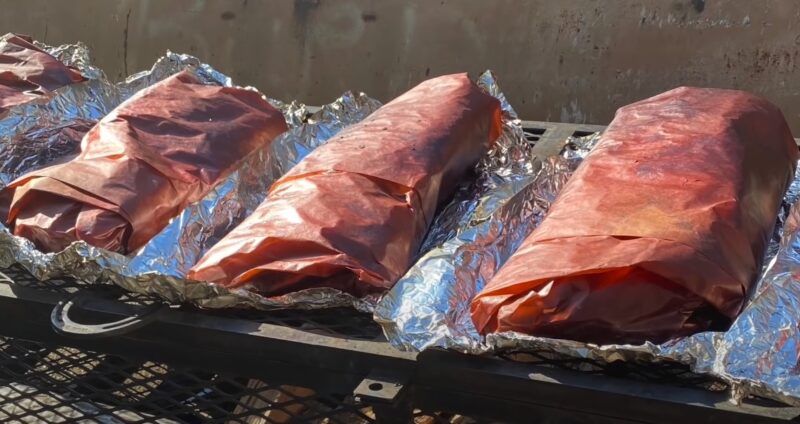
Cooking Frozen Brisket: A Big No
Cooking a frozen brisket is like trying to run a marathon without training – it’s not going to end well.
Frozen briskets cook unevenly, affecting both texture and flavor.
Reheating Thawed Brisket
Once thawed, you can reheat your brisket on a grill, stove, or in the oven.
It’s like reheating a pizza – the goal is to restore its former glory without overcooking it.
Safety First
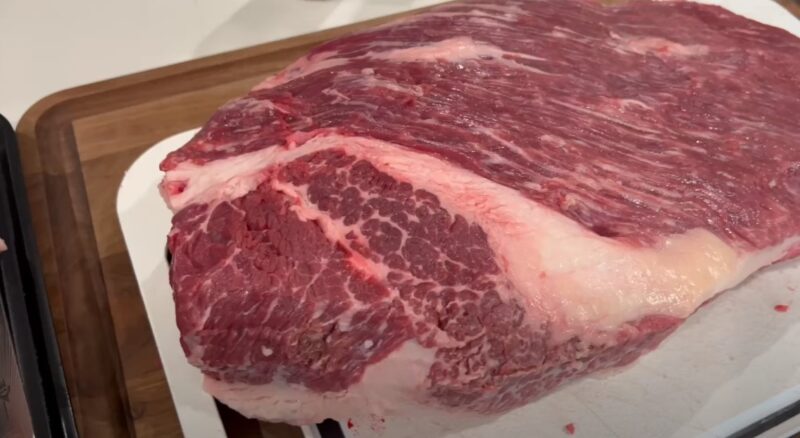
USDA Recommendations
The USDA recommends thawing in the refrigerator for food safety. Think of it as following traffic rules – it keeps everyone safe.
Two-Hour Rule
Never leave cooked brisket at room temperature for more than 2 hours. It’s like leaving ice cream out in the sun – a recipe for a mess.
Advanced Thawing Tips
Pre-Slice Before Freezing
Consider slicing your cooked brisket before freezing. This is like dividing a big project into smaller tasks – it simplifies the process later.
Sliced brisket thaws faster, making it more convenient for quick meals.
Refreezing After Thawing
Refreezing a thawed brisket is like repacking a suitcase after a vacation. It’s doable, but you might lose some quality.
Moisture loss during the initial thaw can affect the texture when refrozen.
The Science Behind Thawing
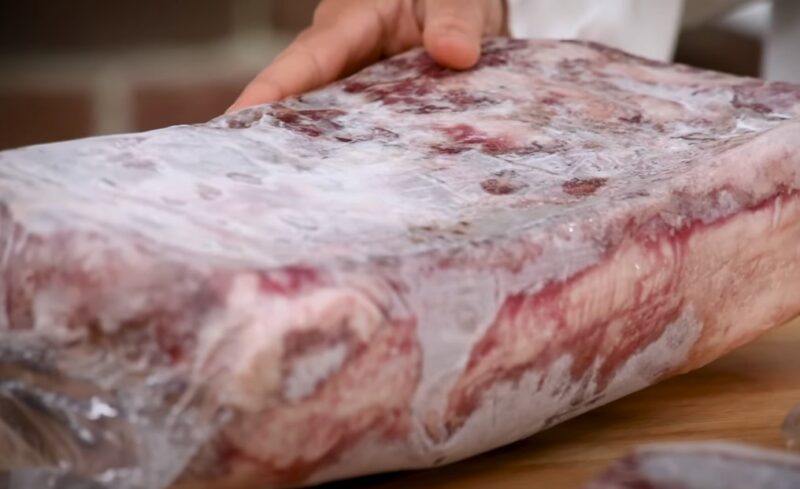
Dynamics
Thawing is not just a waiting game but a careful balance of temperature and time.
The goal is to minimize the time the brisket spends in the “danger zone” (40°F to 140°F), where bacteria can multiply rapidly.
Why Even Thawing Matters
Uneven thawing can lead to parts of the brisket cooking faster than others, resulting in inconsistent texture and flavor.
Thawing and Food Safety
Avoiding Foodborne Illness
Just as you’d wear a helmet when cycling, you should practice food safety when thawing brisket.
Bacteria thrive at room temperature, making it crucial to thaw your brisket safely.
Temperature Monitoring
Keep a kitchen thermometer handy, like a navigator with a compass. Regularly check the water temperature when using the cold water method to ensure it stays cold.
Preparing for the Smoke
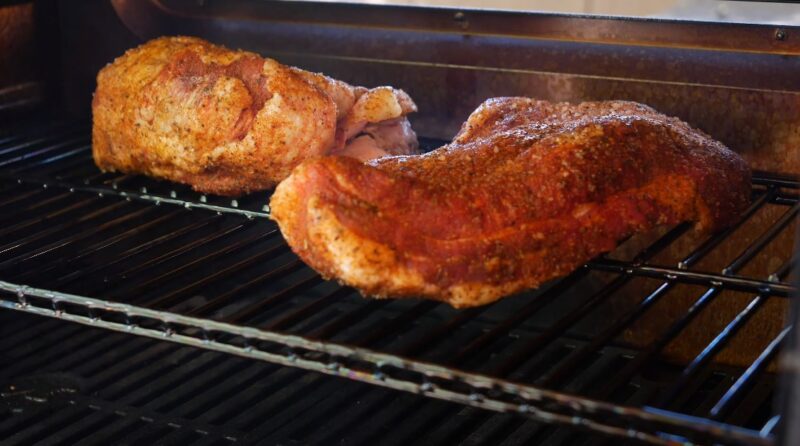
Post-Thawing Preparation
After thawing, treat your brisket like a canvas ready for painting. Trim it if needed and apply your rubs or marinades.
This preparation sets the stage for a delicious smoked brisket.
Time Management
Start thawing based on your cooking schedule. Like planning a trip, consider the end time – when you want to start smoking the brisket – and work backward to determine when to start thawing.
FAQs
Can I Cook Brisket From Frozen?
Technically yes, but it’s not recommended. It’s like baking a cake at the wrong temperature – you can do it, but the results won’t be ideal.
It takes longer and can affect the trimming and smoking process.
Is It Safe to Thaw Brisket in a Microwave?
It’s possible, depending on the microwave and brisket size. However, it’s like using a sledgehammer to crack a nut – overkill and potentially damaging.
Uneven thawing can ruin the texture of the brisket.
Can I speed up the refrigerator thawing process in any way?
Not really. The refrigerator method relies on steady, low temperatures. Rushing it can lead to uneven thawing.
Is it safe to season the brisket while it’s still thawing?
It’s best to wait until the brisket is fully thawed before seasoning. This ensures even absorption and flavor distribution.
Can I use a combination of the refrigerator and cold water methods to thaw brisket?
Yes, you can start in the refrigerator and finish with the cold water method if pressed for time. Just ensure the brisket is sealed properly.
How do I know if the brisket has thawed completely?
The brisket should be flexible and have no ice crystals inside. Use a meat thermometer to check the internal temperature has reached above 32°F.
Should I pat the brisket dry after thawing?
Yes, patting it dry helps to remove excess moisture, ensuring better smoke adherence and a crisper bark when smoked.
Can I refreeze a brisket that was partially thawed using the cold water method?
It’s safe to refreeze if it was partially thawed in cold water and hasn’t reached above 40°F. However, there might be a slight quality loss.
Final Words
Thawing a brisket is the unsung hero of the smoking process. It’s the foundation upon which the smoky, tender goodness is built.
Whether you opt for the patient refrigerator method or the quicker cold water approach, the key is to do it right.
Keep in mind that in the world of brisket smoking, there are no shortcuts to excellence.
If you enjoy beef, check out our article that explains how many beef ribs you require per person, which can be very useful for parties and small gatherings.
